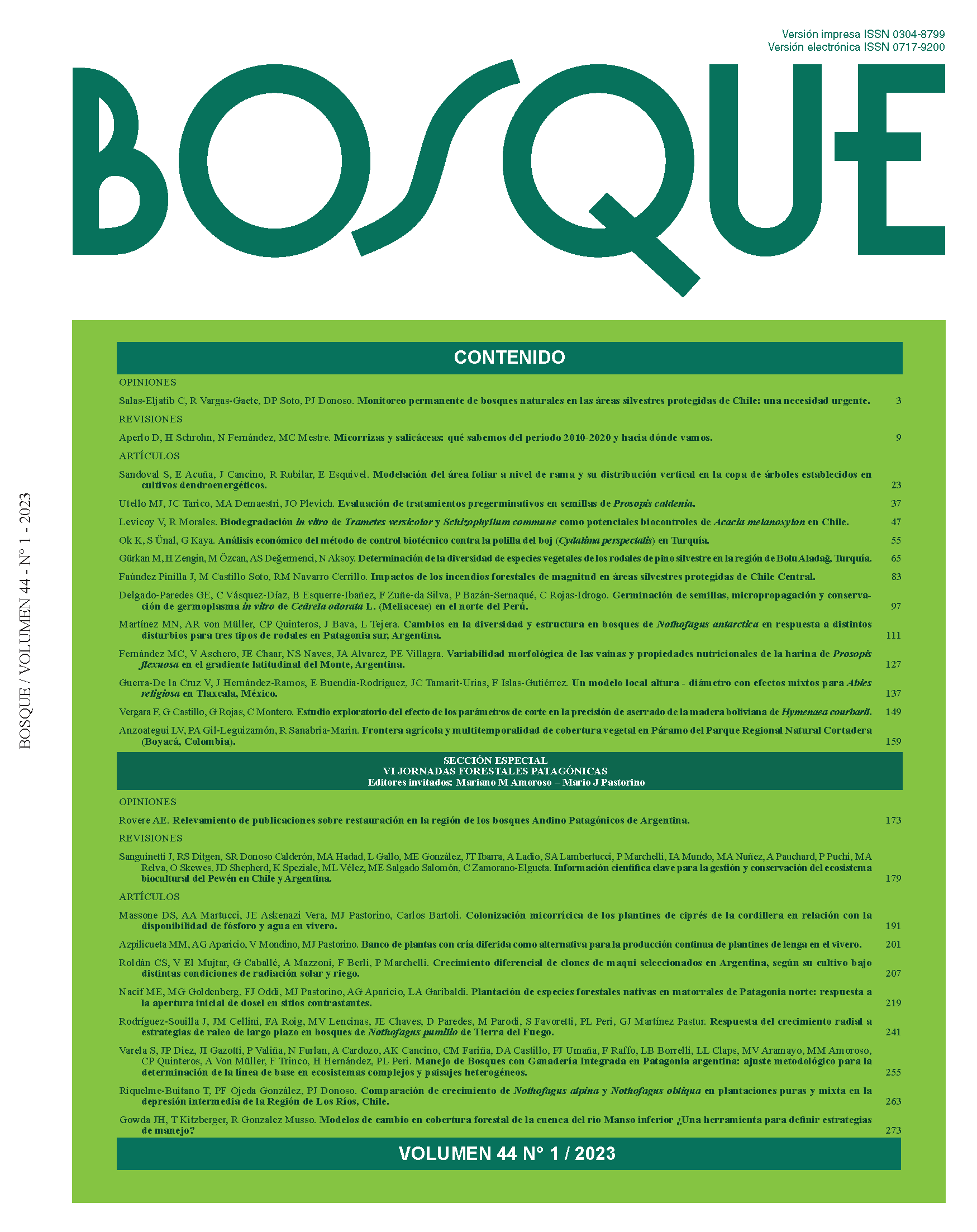Modeling forest cover change in the Manso river basin: A tool for defining management strategies?
Main Article Content
Abstract
Many Andean forests of Northwestern Patagonia have expanded over burned areas during the last century. In this article, we combine maps from early 1900s with potential distribution models based on recent forest cover maps of the region to estimate the long-term responses of the three main forest communities of seed-obligate forests, Nothofagus pumilio, N. dombeyi and Austrocedrus chilensis, to land-use changes within the Manso river basin. This valley has the highest potential for forest management in the Rio Negro Province. Our results indicate that the forest area of the Manso river basin has doubled over the last 100 years. The lenga forests expanded over xeric shrublands in the valley, coihue forests advanced primarily over burned areas at the beginning of the 20th century, while cypress forests advanced both in shrublands and burned areas. Land cover change analysis indicates that A. chilensis forests are the community with the highest relative increment. We conclude that, under current scenarios of climate change, shrubland management combined with a strategy of conversion to productive N. dombeyi and A. chilensis forests in key areas would improve current policy, which is characterized by a lack of forest management in areas under the National Park System as well as under provincial administration.

